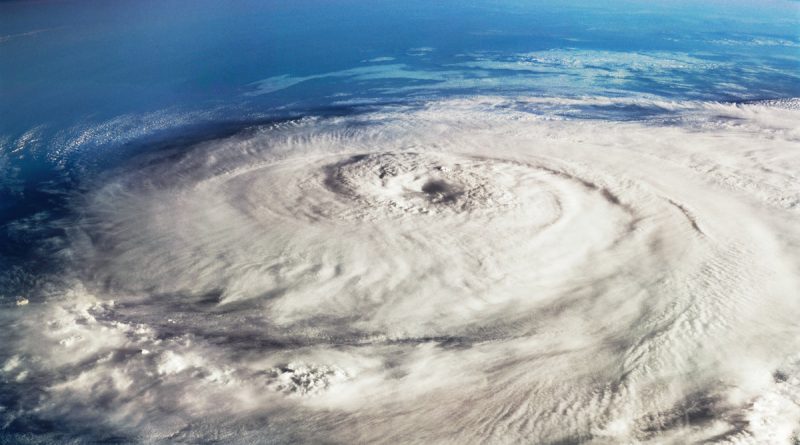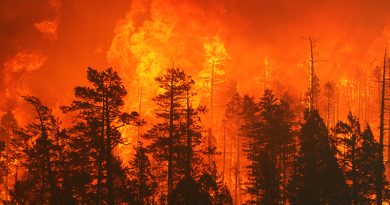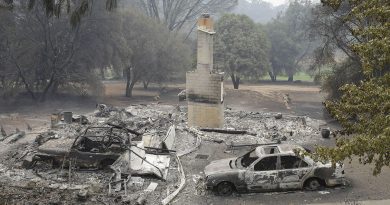Hurricane Season 2017
Unless you’ve been living in total isolation you’re aware of hurricanes Harvey and Irma and their impact on the American gulf coast this year. While these storms have given the prepping community at large a real-time, in-depth and current look at what it’s like to deal with widespread difficulties, the people who have been affected have moved from theory to reality. They are living the crisis. We pray for them.
Summary
Hurricane Harvey made landfall Friday August 25th 2017 between Port Aransas and Port O’Connor, Texas, as a category 4 storm with winds of 130 mph, the National Hurricane Center said. The storm dumped trillions of gallons of water into the Houston areas leaving parts of the city under water. Harvey was the strongest hurricane to hit land in this area, known as the Texas Coastal Bend, since Hurricane Carla, in September 1961 and caused catastrophic flooding in South East Texas. Then as it diminished into a tropical storm, Harvey hit Louisiana a few days later.
Hurricane Irma was tracked earlier this week as a category 5 and made landfall in the Florida Keys yesterday, Sunday September 10th, as a category 4 storm after devastating several Cuban towns and Caribbean islands. The extent of the damage due to this storm is yet to be known. It passed near Tampa as a category 2 hurricane bringing with it severe flooding and intense winds, however Tampa appears to have been largely unscathed. While the damage from this hurricane is sure to be significant, it appears at least early on that Florida dodged a bullet and that Irma did not come close to its full destructive potential.
What can we learn from hurricanes Harvey and Irma?
- Evacuation
With an event this far reaching you can count on gridlock. Freeways will be jammed. A trip that normally would take a few hours could take a day or more or be impossible depending on the crisis. We experienced this with traffic after the August 21 eclipse here in the Western US. A 3 hour drive from Southern Idaho to Northern Utah turned into a 12 hour nightmare. Due to the nature of the event, authorities planned well and anticipated many of the needs of the public. Additionally, with no imminent danger, many people took their time and spread their trip over several days. And most importantly attendance was optional. It was estimated that over 500 thousand people visited South Eastern Idaho for that event. In Florida over 6 million people were under a mandatory evacuation order. There were many reports of gridlock; that it was taking people days to get out state. The highway being called a parking lot became a trite repetition in the news. ABC news reported this specific tidbit giving us some definition to the situation:“We’re getting out of this state,” said Manny Zuniga, who left his home in Miami at midnight Thursday to avoid the gridlock. “Irma is going to take all of Florida.” Despite driving overnight, he still took 12 hours to reach Orlando — a trip that normally takes four hours. From there, he and his wife, two children, two dogs and a ferret were headed to Arkansas.
Source: ABC NewsLong story short, If you don’t have an evacuation plan and if you don’t get out early, you might never get out. If you live in the city, you may need to take some time and make extra-ordinary plans and take certain precautions. It could be the difference between maintaining some relative comfort and several days of extreme difficulty. But if the worst comes to worst your planning may be the difference between life and death.
- Shortages
- Communities coming together
- Lawlessness
- Media Fear Mongering
- Government Overreaction
As is normally the case when a significant hurricane makes landfall, power outages are a given. Reports are that almost seven million are without power today in Florida. Officials are working to bring power back online, but no one can be sure when that will happen. It will most certainly occur in stages.
Fuel: Fuel is needed not only for evacuations but for generators and power equipment. The same article linked above highlights fuel shortages. It is the first and foremost commodity which will be in short supply in almost any mass emergency situation. “In Florida, gas shortages and gridlock plagued the evacuations, turning normally simple trips into tests of will. Parts of interstates 75 and 95 north were bumper-to-bumper, while very few cars drove in the southbound lanes.” Source: ibid
Building Materials: It’s easy to imagine a variety of crises where building materials would be in short supply; prior to a hurricane, after an earthquake or tornado for example. Plywood, certain types of lumber, screws, nails, etc have been difficult to find in the affected areas prior to the storms. After such a crisis, there is always a spike in demand for such materials to rebuild.
Water: South Florida experienced the most demand for supplies however the pinch has been felt much farther out. In Atlanta many reported shortages of bottled water.
Most stores had bare shelves of bottled water. At a Publix in Fulton County, customers grabbed water off the shelves as soon as employees re-stocked. “We went to check water and there was no water,” said Kiona Santano, who was shopping at a Walmart in Gwinnett County. NBC 11 Atlanta
Food / Price Gouging: Food has also been in short supply, but not so much as water. The main issue here has been price gouging.
Florida Attorney General Pam Bondi says the state has gotten more than 1,500 calls on a price-gouging hotline in the last two days. Bondi said Wednesday that many of the calls dealt with complaints about the prices being charged on water, food and gas, although she said people have also called to complain that stores are running out of supplies. ABC News
Equipment: Items like generators are always in short supply in such situations. During massive winter storms, things like snowblowers are the first to become scarce. This is more of a panic buying sort of a response because most of these situations pass and normalcy returns within a few days or weeks. It’s after the crisis if the situation becomes a protracted difficulty, then it becomes clear what is really important. In a protracted crisis without rule of law or limited rule of law self defense items like firearms and ammunition could become scarce. With broad ranging destruction, any types of tools and power equipment large or small (i.e. from chainsaws to power hand tools [corded or cordless] all the way to skid steers and backhoes) would be of great value. Where power-outages persist it’s not just the generators that will be needed but the fuel to run them. Firewood could even become scarce.
Even though the mainstream news would have you believe that this country is irreparably divided, the news coming out about communities coming together in light of the hurricanes is invaluable. It shows we can have great hope for our friends and neighbors and communities especially in the short term crisis. This article sheds light on how race is a non-issue among most hurricane survivors.
With so many displaced from their homes, looting has been by far the most significant crime occurring in the wake of hurricane Harvey. But Texas being a gun loving state where the 2nd amendment is alive and well, it seems they have this under control to a large extent. “You loot. We shoot” is the slogan that has been broadly adopted by Texans and many have come together to protect local resources, stores and homes (much to the chagrin of the statists). It’s nice to see communities taking care of the basics like this. We’ll see how this continues as the communities adapt to the true aftermath of the calamity.
In Florida so far 32 looters have been arrested, 28 in Miami alone. Shocking videos also emerged of gangs trying to break into stores and take advantage of deserted properties. The same article also reports that SWAT officers in Orlando had a standoff which began when looters broke into Academy Sports trying to steal guns.
It remains to be seen how or if Florida’s communities will pull together to combat lawlessness.
Notwithstanding the fact that these hurricanes were legitimate threats to life, limb and property we can’t help but see a great deal of fear mongering and profiting from others misfortunes in the coverage of these events. Fear and calamity definitely sells advertising. However this sort of behavior is becoming more and more recognized and hated. Perhaps the most strident example of this was this CNN clip of a rescued mother going off on a CNN reporter.
The mainstream hype linking these hurricanes to man-made global warming (aka climate change) has been somewhat of a thin pretense considering the extent of the historic hurricane data available and the whistle blowers who have come forward showing the nefarious upward modification of historic temperature data. It’s unfortunate that the public at large is left with many over-hyped and generally unreliable news sources. In many cases the problems are overestimated. What is likely to happen though is that the true extent of these crises will be downplayed as has occurred in the past when the new cycle moves on to the next crisis (real or imagined).
Additionally, the substance of most mainstream news sources “help” during these crises has been not only underwhelming but purely statist. There has been sort of a tabloid magazine “10 top hurricane supplies to stock up on” style of reporting which although it might help some seems to imply a general sense of helplessness among the public at large. If one were to follow only their suggestions, they would be woefully unprepared. This simplistic propaganda then supports the statist “authorities are doing what they can” style of “authorities say do this, don’t do that” reporting that in almost every case focuses the viewers/readers on what government is doing or should be doing or can be doing for them instead of what the viewer can do for themselves and others. I am left ironically longing for the days of JFK when he said “Ask not what this country can do for you…”
Situations like these almost always showcase the inadequacies and the over-reach of governments from the city level on up. Residents in Miami Beach and in the Keys are being denied re-entry to their homes. Tensions are running high as utility companies and select unmarked vehicles are allowed in while most are blocked from access. It’s clear that the devastation from hurricane Harvey two weeks ago must have influenced officials decisions to order the mandatory evacuation of over 6 million Floridians. But when the media and government overreact often enough many of the public see this as crying wolf. The Miami Herald reports the following:
“This stuff right here is the reason why next storm they aren’t going to get people out of the Keys,” said the man, who identified himself as a Cudjoe Key resident but did not want to give his name. “I’ve been in the Keys for 40 years. This is the first time I ever evacuated and it’ll be my last.” Source: Miami Herald
Hopefully when the time comes you all out there will be able to discern what is best for you and your family in spite of the misinformation that is likely to abound in any large scale crisis situation.
Conclusion
It goes without saying that when the crisis is upon you it’s already too late to get ahead of the masses. In our hyper-informed society things move quickly. Take steps today to assess the potential crises that may affect your life and family. Make a plan to mitigate those problems now. Take the preparatory steps and live ready to execute your plans when the time comes.




